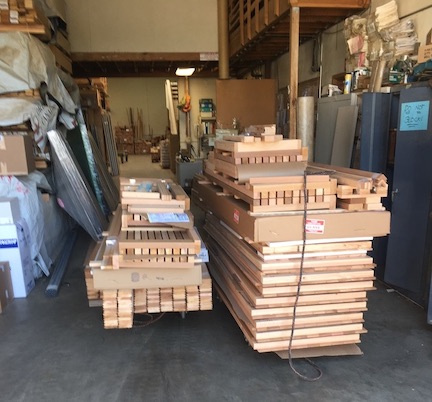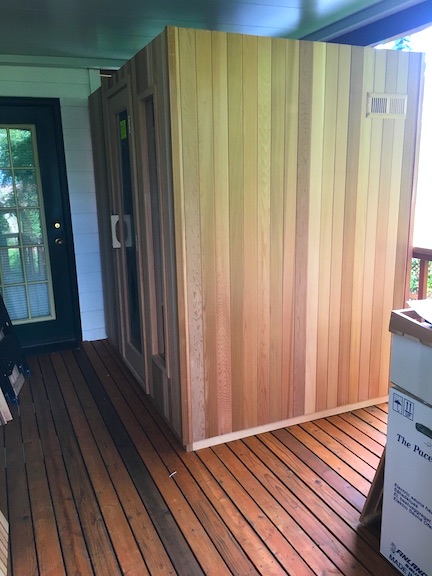Following directions? It sounds so easy, so easy that anyone could do it.
So why don’t they? Bad directions? Incomplete?
Or maybe directions don’t apply to you because you’ve been everywhere and done everything?
That’s where I usually start. And yes, I’ve had some regrets, leftover parts, and malfunctions.
But that was then, way back when.
I’m much better now and I’ll share how to make the jump.
Putting things together is so educational:
The difference between building up and tearing something down looks the same at some point in the project.
Taking a building down leaves a trail of crap all over the place; prepping a site to start building does the same thing except with more organization.
Walk past any fenced off block in a growing city like Portland and that’s what you’ll see.
What’ll you see at first is a huge hole in the ground, like a bomb crater. But it’s not a bomb, it’s a plan. From footings to foundation to walls, then floor after floor, the buildings rise.
Screw things up at the start and the rise is short because it will fall. Eventually. How do architects and engineers and builders avoid that?
They follow directions. One more time? They. Follow. Directions. And building codes.
Public safety says it’s bad when a building falls on a crowd. Or when something on a building falls anytime. Crushing citizens to death from poor planning and execution is never good civic policy.
Following Directions Is Good Personal Policy
If you’ve ever put a kid’s bike together, and left a few things out like brakes, you did it wrong.
With anything involving others’ safety is in play, why not go the safe route?
What if you didn’t tighten the handle bars and they slip and your kid takes a header over the front and breaks their collar bone? You may not want to say it was you, but it was you.
Follow directions to avoid the obvious, the accidental, and the eventual blame for whose fault it was. (Yours!)
2
I had an opportunity recently to finance a project with a company that seemed a little off. I got good advice and glowing reviews, but it still seemed fishy.
So I read reviews of the financing company and they weren’t good. More questions than answers, so I called them.
One of things that caught my attention was their requirement to post my social security number on their registration page. I only break out the SSN under duress. Security concerns and all.
The man I talked to said: “That’s a good question about security and most of the time we have all of their info in front of us when they call.”
“Do you have all my information in front of you?”
“No.”
“Do you have encrypted security on your site?” (I don’t know what ‘encrypted security’ means, but figured the guy I’m sending my numbers to would.)
“We have state of the art security.”
“Could you tell me a little about it before I send my social security number?”
“State of the art.”
“Have you had any problems with identity theft?”
“Not to my recollection.”
The deal was a no interest loan if paid on time. If not, they charge 26% interest from the loan date start. Even more interesting, they start charging interest on this no interest loan from the day of approval, then refund it if paid on time.
That didn’t sound right, so I called the project company about their financing recommendations. Never had a problem, they said.
Common Sense Call
I balanced the online reviews, the real time chats, and came up with one conclusion: Not a good choice for financing.
Of course some of the complaints came from people who didn’t follow loan directions and got tagged with the big interest. One review said the interest was so bad that after a year of payments they’d barely moved the principal.
While I’m not a stickler for directions, I keep a printed sheet handy to reference if I get stuck. Besides, most directions are geared for rookie builders, not a seasoned pro.
It’s one thing to make a build mistake and start over, but missing payments and getting stuck with a financial drain instead of a benefit is on a whole ‘nother level. The first is short time, the second is an ongoing reminder of stupid.
Who needs that? Common sense says not you. Or me. Brother.
Top Image Explained
A model car kit comes in a small box with lots of pieces to glue together.
Food service delivery comes with ingredients and recipes to follow. Recipes or general guide lines is a personal call.
A table in pieces comes in a bigger box, but it gets delivered.
The pile in the top image is at Will Call. I rented a truck for $19.99 that ended up costing $76. I called on the charge: $19.99 + 42 miles @ $1.10 a mile + $10 walk away crash insurance and a few administrative charges all added up.
That $19.99 sure looked good in print, and would have worked better if I didn’t actually go anywhere. Still, it was good to call. They sent an email with the charges while we spoke.
The pile of wood on a dolly went into the truck. My strong kid helped unload the heavy awkward load. It came with directions, funny building directions, like it was interpreted from another language.
Every step of the way included words like “Gentle push” and “Carefully adjust” and “Easily slide.”
The Gentle Persuader
As a seasoned pro in putting things together, I immediately got my hammer and a wood block. It was nice wood, and it would be a shame to pound it with a hammer. Instead, use the block of wood as a striking buffer over nice wood.
After the gentle, careful, easy whacks from the hammer, the thing went up.
Following directions always helps, so does having the right people on the job.
Foundation? Check.
Walls? Check.
Roof? Check.
Floor? What floor? I need a floor? There weren’t floor directions?
Next step? Floor.
As much as we need directions for complicated things, they aren’t always as complete as they can be.
Who knew? Now you know.
Take your next project from what it was, to where it is; from where it started to how it’s going.
So how’s it going on your end? Leave a comment. It doesn’t have to be as good a comment as others, but you know you’ve got something going you’re proud of.
This is a worldwide blog. Someone in India might read your comment and make their day.




